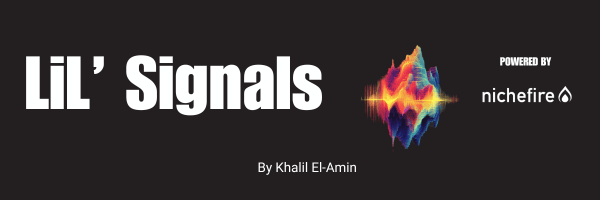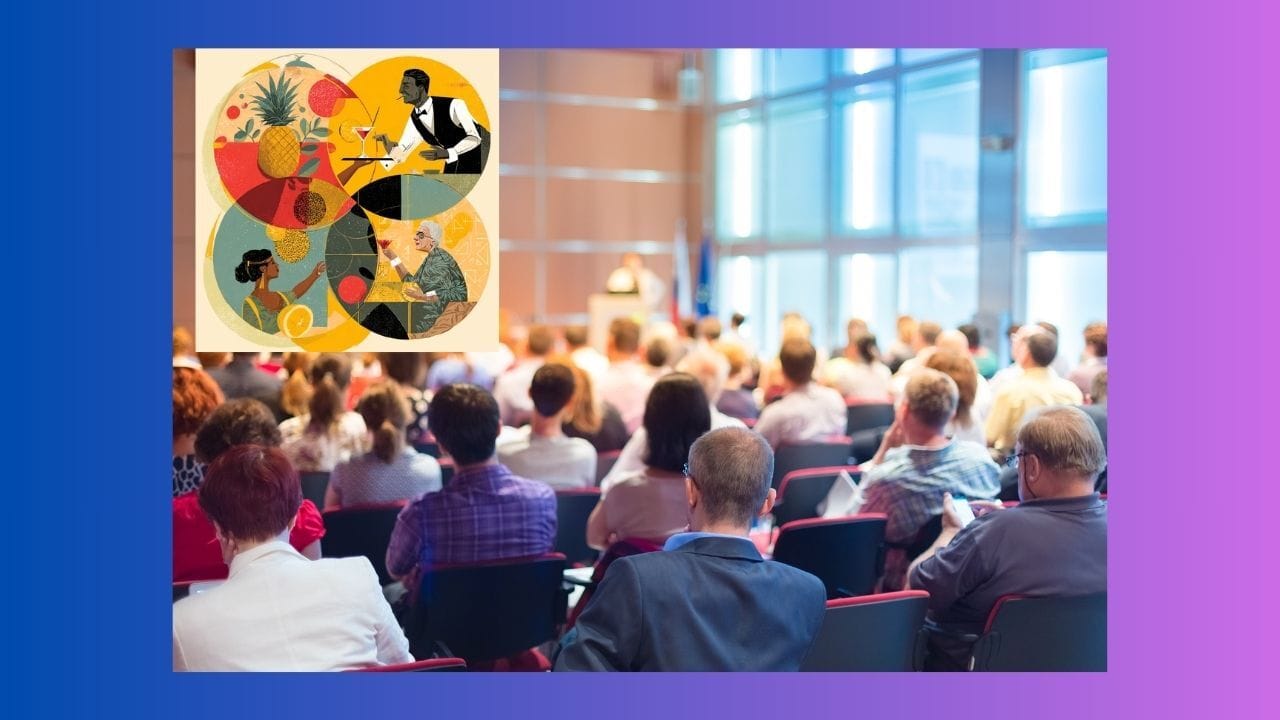- Lil' Signals
- Posts
- Lil’ Signals: When Culture Collides
Lil’ Signals: When Culture Collides
From dinner table misunderstandings to international tensions—why cultural listening is the most underrated leadership skill of our time.

👋🏽 Hey There
Lil’ Signals is your go-to newsletter for decoding the cultural currents shaping our world. Powered by Nichefire’s cutting-edge technology, we break down trends, tell compelling stories, and share actionable insights on how to tap into the power of cultural listening.
Stay ahead of the curve—one signal at a time.
In this edition, we’re not just talking about culture—we’re unpacking how it feels. How moments of misunderstanding, awkward laughter, or unspoken expectations reveal the deep social codes we carry with us. From a fallen chair at a family dinner to the ripple effects of global headlines, we’re exploring how perception is shaped, challenged, and changed by culture.
This week’s Storytime walks through a simple night out that turned into a masterclass in cultural nuance. It’s a reminder that even the most personal moments can hold powerful lessons in empathy, identity, and perspective.
And in this week’s Cultural Listening 101, we show you how to move beyond surface-level trends and into strategic cultural insight—insight that can shape not just content, but product development, brand strategy, and leadership decisions at scale.
Because in today’s world, understanding culture isn’t optional—it’s a competitive advantage.
Let’s dive in 🎯
Table of Contents

StoryTime
Storytime: The Fall, the Waiter, and the Disconnect

Before we started Nichefire, I often avoided political conversations.
Not because I didn’t care, but because I was conditioned to keep the peace at all costs.
Being a Black Muslim man raised in a culturally rich but often clashing environment, with Muslim parents, Christian extended family, and Jewish neighbors, I learned early on that silence sometimes felt safer than conflict.
But building a platform rooted in cultural listening changed that.
When I talk about culture here, I’m not talking about music charts or internet trends.
I mean the deeper stuff: the shared beliefs, behaviors, and rituals that shape how we live, what we value, how we shop, how we vote, how we relate.
And lately, it’s impossible to ignore how deeply politics is shaping that culture.
I’m not here to tell you what to believe.
I’m here to say: culture is personal, and politics are a part of that.
And if we’re going to understand people better, whether to serve them, support them, or simply coexist, we have to get more comfortable looking at how our lived experiences shape how we see the world.
Let me explain what I mean with a story.
Dinner with My Mom
Last week, a bad storm knocked out power at our house.
With five kids and no way to cook, my wife and I decided to take the family out to eat. We invited my mom to join us.
We chose a local Mexican spot, one of those fun, vibrant places where they put umbrellas in every drink and the music’s always bumping.
Perfect for our wild twin toddlers and honestly, our whole loud, blended, beautiful chaos of a family.
We sat outside, and everything was going fine, until one of the twins, true to form (yes, those duct-tape-diaper twins), wriggled out of her booster seat and made a break for the patio gate that opened to the street.
“Mom, grab her!” I shouted.
My mom jumped to stop her, reaching too fast, and she fell.
Hard!
She hit the ground, spilled her virgin piña colada, and drew everyone’s attention.
It was embarrassing. I was concerned, of course, but also hyper-aware of the eyes on us.
A big family, a loud moment, it felt like all the noise and tension landed right at our table.
What happened next is where the cultural layers kicked in.
Our server, a quiet Mexican man, came over.
His English was limited.
He asked gently if everything was okay.
My mom, still rattled and hurt, explained that she had fallen.
He gave a small, nervous chuckle, not out of rudeness, but out of discomfort, out of the instinct to lighten the mood.
That didn’t sit well with my mom.
She felt dismissed.
Like she wasn’t being taken seriously.
The cultural wires had crossed.
Layers of Misunderstanding
Now, my mom’s the type of person who likes things a certain way at restaurants. She’s got expectations, service, clarity, respect.
It’s just her personality. And she hadn’t been in the best mood even before the fall.
But I’ve worked with Mexican crews before.
I know their vibe.
There’s humor in how they deal with tough stuff.
There’s lightness, even in stress. It’s a way of handling discomfort, one rooted in culture, not disrespect.
The waiter wasn’t mocking her.
e was doing what he knew: trying to ease the tension with a little lightness.
But my mom didn’t have that context.
And it reminded me how easily cultural differences can create emotional distance, even when no one means harm.
The Bigger Picture
The next day, I was talking to someone helping us train Nichefire’s models in Spanish.
She said something that stuck with me:
“Mexicans might be the most fun people in the world. Fun matters more than anything.”
She told me stories about Sunday nights in Mexico, dads wearing goofy hats, families laughing loudly in restaurants.
That conversation reframed the moment from the night before. It wasn’t a language barrier; it was a cultural lens.
And then it hit me:
This is happening all over the world, all the time.
In restaurants.
Online.
On news channels.
In policy debates.
Every interaction, every conflict, every moment of misunderstanding or alignment is filtered through the lens of culture.
A joke that lands in one country might offend in another.
A gesture of respect in one household might read as indifference in another.
The way we interpret events, whether it’s a chuckle at dinner or a breaking news headline, isn’t just about what happened.
It’s about how we’ve been taught to see the world.
Our upbringing, our values, our communities, these aren’t just backdrops.
They’re the frameworks we use to make meaning.
And if we don’t understand those frameworks, we’ll keep misreading people, misjudging intentions, and missing opportunities to truly connect.
That’s why cultural listening matters.
Because in a world this complex, assuming isn’t enough.
We have to listen actively, empathetically, and with curiosity.
Not just to what people are saying, but to what’s shaping what they say.
Culture is the context.
Without it, we’re just guessing.
Grace Over Judgment
We’re living in a charged world.
With the conflicts in the Middle East, political unrest, and economic uncertainty, it’s easy to retreat to our corners.
To feel misunderstood.
To blame others for not reacting “the right way.”
But culture isn’t right or wrong.
It’s just different.
And the more we understand those differences, the better we connect.
My mom, if you’re reading this, I love you.
This isn’t a diss.
You did what any grandma would do: you tried to protect your grandbaby.
And that waiter?
He did what his culture taught him too: tried to soften a hard moment with humor.
Both were human. Both were right.
If we want to build better products, brands, and communities, we have to get better at seeing through each other’s eyes.
Especially when it’s uncomfortable.
Let’s lead with understanding. Let’s strive to connect, not correct.
Stay curious. Stay connected. Stay ahead.
Let’s decode what’s next. Together.
Let’s explore the power of culture, one signal at a time.

Cultural Listening 101
Cultural Listening 101: From Signals to Strategy
🎯 Lesson Objective
Learn how to use cultural listening to uncover real-time insights that can shape business strategy, innovation, product development, communications, and customer experience.
1. Anchor in Business Strategy
Start with a clearly defined corporate goal or challenge.
Are you exploring new markets?
Repositioning a brand?
Looking for innovation white space?
Cultural listening begins where your strategic questions live, not just marketing briefs.
2. Mine the Cultural Landscape
Use Nichefire to scan conversation clusters, meme patterns, sentiment shifts, and emerging themes.
You're looking for why people care, not just what they say.
Example: Lemon pepper chicken trends reflect cultural codes around affordability, comfort, and family, not just food preferences.
3. Decode the “Why”
Ask: What does this tell us about people’s needs, frustrations, aspirations, or rituals?
Translate signals into strategic implications:
Consumer shift = product opportunity
Meme trend = perception insight
Reddit thread = behavioral whitespace
4. Visualize Cultural Tension Points
Use voice notes, screenshots, or clusters to build a narrative picture.
Don’t just surface data—interpret it:
What is being said?
Why now?
What’s the opportunity for us?
5. Forecast Cultural Momentum
Use trend scoring and seasonality tools to time action.
Example: Health-focused food spikes post-holidays—ideal for launching better-for-you SKUs.
Predict when signals will gain traction and align launches or messaging accordingly.
6. Operationalize with AI
Leverage tools like Cultural GPT to:
Analyze sentiment
Extract behavior patterns
Visualize language clusters
Empower small teams to act like full research departments, fast.
7. Apply Insights Cross-Functionally
Cultural insights aren’t just for comms—they’re organization-wide levers:
Product: New concepts, flavors, formats
Innovation: Identify unmet needs before your competitors
CX/UX: Design with cultural nuance
Brand: Align narrative to current identity signals
Strategy: Prioritize where you play and how
💡 Key Takeaway
Cultural listening isn’t about chasing trends—it’s about decoding human behavior at scale to inform smarter, faster business decisions across the enterprise.
Action step: Pick one cultural signal your team is tracking. Now challenge yourself: How can this inform product, positioning, or planning—not just content?
That’s how leaders lead culture.
Want help replicating this inside your own category?
Reach out for a walkthrough and start making cultural listening work for you.
See you next week for another installment of Cultural Listening 101.
Thank you for subscribing to Lil’ Signals. If you enjoyed this post or know someone who may find it useful, please share it with them and encourage them to subscribe:

Content Engines
I want to see what you can create!
Got a cool AI-generated video?
Creative Experiment?
A bold Idea?
Share it with me!
Reply to this email with your best creations, and let’s see who’s leading the AI content revolution. 📤✨

Top Cultural Trends
Stay Ahead with Nichefire
In this new section, we’re diving into Nichefire’s unique tools to explore the top cultural trends shaping our world.
This week, we break down key insights from the Movements Matrix, spotlighting high-growth and emerging trends across 47 cultural categories
Spot Emerging Trends: Discover niche opportunities before they hit the mainstream.
Actionable Insights: Leverage cultural data to make faster, smarter decisions.
Comprehensive View: Analyze trends across 47 pre-trained cultural categories.
Lil’ Surfing 🌊
Just interesting articles I find on “The Internets” 😜

💬 Your journey into the world of cultural insights starts here!
Thank you for being part of the Lil’ Signals community. Together, we’ll decode the world, one signal at a time.
Reply